Citations
- ↑ "S-55". Encyclopedia Astronautica . Retrieved 2018-06-08.
| This article about one or more spacecraft of the United States is a stub. You can help Wikipedia by expanding it. |
S-55 was an American satellite launched by NASA on 30 June 1961 as part of the Explorers program. [1] Explorer (S-55), also known as Meteoroid Sat A, was launched using a Scout_X-1 rocket from the Wallops Flight Facility. Its mission was to evaluate the launch vehicle, and investigate micrometeoroid impact and penetration. The mission failed because the third stage failed to ignite and the spacecraft did not achieve orbit.
| This article about one or more spacecraft of the United States is a stub. You can help Wikipedia by expanding it. |

The Explorers Program is a United States space exploration program that provides flight opportunities for physics, geophysics, heliophysics, and astrophysics investigations from space. Launched in 1958, Explorer 1 was the first spacecraft of the United States to achieve orbit. Over 90 space missions have been launched since. Starting with Explorer 6, it has been operated by NASA, with regular collaboration with a variety of other institutions, including many international partners.

Explorer 4 was an American satellite launched on July 26, 1958. It was instrumented by Dr. James van Allen's group. The Department of Defense's Advanced Research Projects Agency had initially planned two satellites for the purposes of studying the Van Allen radiation belts and the effects of nuclear explosions upon these belts, however Explorer 4 was the only such satellite launched as the other, Explorer 5, suffered launch failure.
Zond was the name given to two distinct series of Soviet robotic spacecraft launched between 1964 and 1970. The first series, based on the 3MV planetary probe, was intended to gather information about nearby planets.
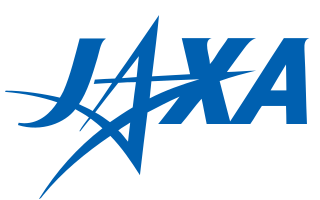
The Japan Aerospace Exploration Agency (JAXA) is the Japanese national aerospace and space agency. Through the merger of three previously independent organizations, JAXA was formed on 1 October 2003. JAXA is responsible for research, technology development and launch of satellites into orbit, and is involved in many more advanced missions such as asteroid exploration and possible human exploration of the Moon. Its motto is One JAXA and its corporate slogan is Explore to Realize.
Explorer 2 was to be a repeat of the Explorer 1 mission. However, due to a failure in the rocket during launch, the spacecraft did not reach orbit.
The FLuorescence EXplorer (FLEX) is a planned mission by the European Space Agency to launch a satellite to monitor the global steady-state chlorophyll fluorescence in terrestrial vegetation. FLEX was selected for funding on 19 November 2015 and will be launched on a Vega C rocket from Guiana Space Centre in 2024.

Explorer 5 was a United States satellite with a mass of 17.24 kg. It was the last of the original series of Explorers built, designed, and operated by the Jet Propulsion Laboratory.
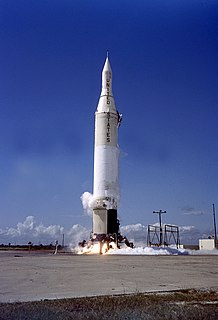
Juno II was an American space launch vehicle used during the late 1950s and early 1960s. It was derived from the Jupiter missile, which was used as the first stage.

Explorer 54, also called as AE-D, was a NASA scientific satellite belonging to series Atmosphere Explorer, being launched on October 6, 1975 from Vandenberg AFB board a Delta 2910 rocket.
Explorer-1 [Prime], also known as E1P and Electra, was a CubeSat-class picosatellite built by the Space Science and Engineering Laboratory (SSEL) at Montana State University. It was launched aboard a Taurus-XL rocket from Vandenberg Air Force Base, California on 4 March 2011, but failed to achieve orbit after the rocket malfunctioned.

Explorer 9, known as S-56A before launch, was an American satellite which was launched in 1961 to study the density and composition of the upper thermosphere and lower exosphere. It was a reflight of the failed S-56 mission, and consisted of a 7 kg (15 lb), 3.66 m (12.0 ft) balloon which was deployed into a medium Earth orbit. The mission was conducted by NASA's Langley Research Center.
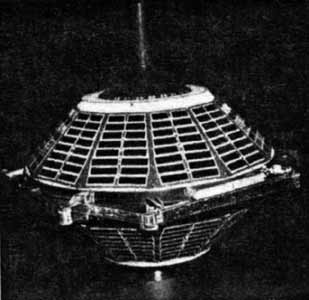
S-45 was an American satellite, which was lost in a launch failure in 1961. The satellite was intended to operate in a highly elliptical orbit, from which it was to have provided data on the shape of the ionosphere, and on the Earth's magnetic field. It was part of the Explorer programme, and would have been designated Explorer 10 had it reached orbit. A second identical satellite, S-45A, also failed to achieve orbit when it was launched.

S-45A was an American satellite, which was lost in a launch failure in 1961. The satellite was intended to operate in a highly elliptical orbit, from which it was to have provided data on the shape of the ionosphere, and on the Earth's magnetic field. It was part of the Explorer programme, and would have been designated Explorer 12 had it reached orbit. It was the second of two identical satellites to be launched; the first, S-45, had also been lost in a launch failure, earlier in the year.

S-1, also known as Explorer S-1 and Explorer 7X, was a geoscience satellite equipped with a suite of scientific instruments to study the environment around the Earth. The spacecraft and its Juno II launch vehicle were destroyed five seconds after launch on July 16, 1959, in a spectacular launch failure caused by complications with the rocket's power supply. A relaunch of the mission in October 1959, Explorer 7 (S-1A), was successful.
Explorer 16, also called S-55B, was an American satellite launched as part of the Explorers program. Explorer 16 was launched on December 19, 1962, at Wallops Flight Facility, Virginia, United States, with a Scout rocket.

Explorer 22 was a small American ionospheric research satellite launched October 9, 1964, part of NASA's Explorers Program. It was instrumented with an electrostatic probe, four radio beacons for ionospheric research, a passive laser tracking reflector, and two radio beacons for Doppler navigation experiments. Its objective was to provide enhanced geodetic measurements of the Earth as well as data on the total electron content in the Earth's atmosphere and in the satellite's immediate vicinity.
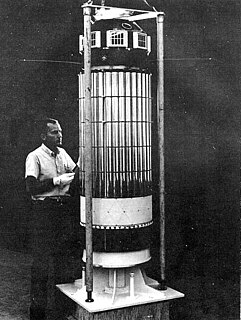
Explorer 23 was the last of three S-55 micrometeoroid satellites launched as part of NASA's Explorers program. Its purpose was to obtain data on the near-earth meteoroid environment, thus providing an accurate estimate of the probability of penetration in spacecraft structures by meteoroids and allowing a more confident definition of the penetration flux-material thickness relation to be derived.
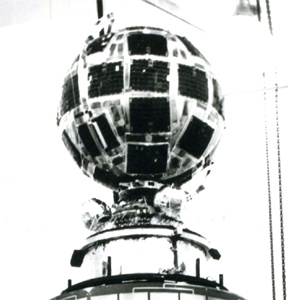
Dual Air Density Explorer was a set of 2 satellites, DADE-A and DADE-B, released as part of NASA's Explorers program. DADE-A and DADE-B was launched on 6 December 1975 at 15:35 UTC, by a Scout F-1 launch vehicle from Launch Complex 5, Vandenberg AFB, California. The launch of the DADE satellites failed. .